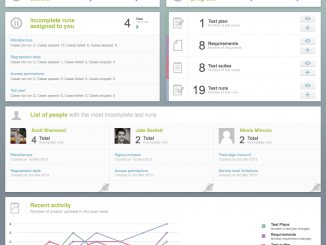Software Testing Articles: Load Testing, Unit Testing, Functional Testing, Performance Testing, Agile Testing, DevOps
As Artificial Intelligence (AI) is gaining wide acceptance in the software development world, the question is open on how you should apply software testing practices to this type of software. Based on a true story, Anna Royzman explains that you need to carefully design your test strategy… and not only for AI software.
Even in the era of cloud computing when you can scale your infrastructure more easily, building and managing a software that can scale and support a large number of users is more than just putting more powerful hardware. In this article, Dmitro Kosenko discusses the main principles behind load testing and proposes a step by step process to perform load testing using Microsoft’s Visual Studio Team Service.
It is not easy to write good automated tests as it involves to create and maintain a stable testing environment and configure the right tools. In this free less extracted from his “Test With Spring” course, Petri Kainulainen explains how to run integration tests With Maven, Spock edition.
Continuous Testing is the process of executing automated tests as part of the software delivery pipeline to obtain immediate feedback on the business risks associated with a software release candidate. This practice is strongly associated to the Continuous Delivery approach. In his article “Continuous Testing in .NET”, Damir Arh proposes an overview of continuous testing and how to implement it in Visual Studio.
Test management is an essential activity for software testing. The software development teams need to have a central repository to store the test plans, test cases and test results that will provide input for the bug tracking system. In this article, Scott Sherwood presents TestLodge, a test management tool that allows you to manage your test plans, test cases and test runs with ease.
Software testers like software developers might be generally more introverted than extroverted. However, with Agile software development approaches like Scrum, communication between team members and with external stakeholders become a critical for project success. In this extract from her book “Guide to Advanced Software Testing”, Anne Mette Hass presents some general ideas about the communication issues for software testing teams.
The management of test environments is an area mostly neglected in software development projects. In this article, Niall Crawford discusses the basic requirements of test environment management and explains the benefits this activity provides.







